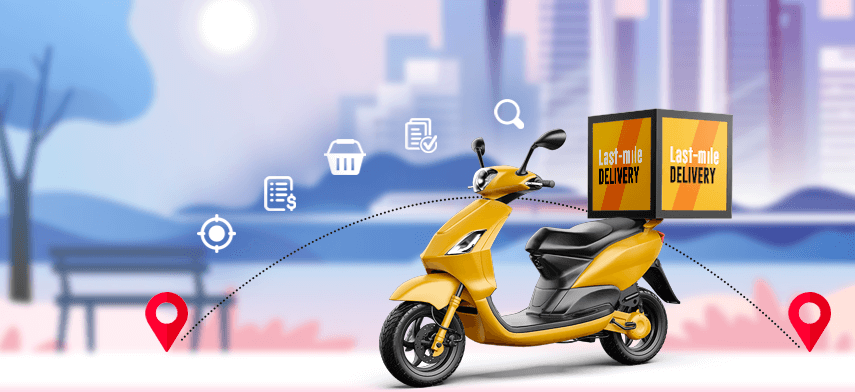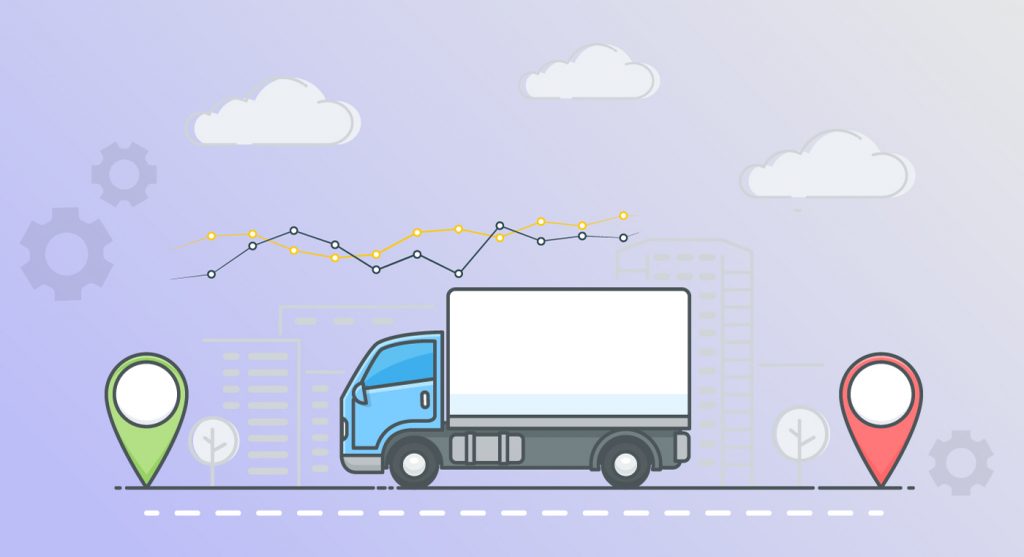Last-mile delivery as the name suggests is the last leg of the journey of a product from the transportation hub to the final customer. Even though it has been an important aspect of the overall product manufacturing procedure, the increasing popularity of online shopping has pushed the need for a more efficient last-mile delivery service from all online retailers today.
Along with this, the changing buying behaviour patterns of the population today have further pushed the demand for better-developed last-mile delivery options as the consumers want free and fast delivery only. In simple words, the increasing need from the customers for faster and more efficient delivery service is the primary reason driving the need for optimization of last-mile delivery for all businesses today, especially online retailers.
What Are The Costs For Last-Mile Delivery?

The last-mile delivery, to a great extent, controls the customer satisfaction level for an online retailer. As a crucial part of the shipping process, it is important to manage the expense along with the time and effort put to deliver the final product to the customers in a manner that derives maximum benefit. Before we dig deeper into the tips to optimize last-mile delivery for your business, let us look at the common costs relating to last-mile delivery logistics below.
Maintenance Costs
The possibility of a delivery truck breaking down cannot be directly controlled by the online business. For the same reason, even a slight issue with the delivery truck can delay the deliveries of the day further adding up to the overall cost along with the maintenance cost for fixing the delivery truck issue.
Refund Costs
Even though most online businesses set the return/replacement option for the customers to offer utmost customer satisfaction. However, given how customers are keen on timely deliveries, they tend to return the package or request compensation against the delayed delivery. This is known as the refund cost, which is an added burden for the last mile delivery logistics.
Storage Costs
For specific items like food and medicine, the requirement for specialized equipment to keep the product fresh till the last mile delivery is an added cost to the overall operational cost for any online business. Moreover, the cost for parking the delivery trucks and storing the additional products for the next day deliveries also adds to the overall cost.
Congestion And Environmental Costs
All the different delivery vehicles used by online businesses have a major contribution to the overall air pollution in their respective areas. Additionally, the delivery trucks can also cause traffic jams in our haste to deliver on time, adding to the increased emission of carbon in the atmosphere. Along with this, the government and local bodies put heavy fines on delivery vehicles keeping in mind the environmental and congestion costs, the overall cost, and increases for the last mile delivery logistics.
Idling Costs
As one of the recently introduced challenges for last-mile delivery logistics, idling costs reflect inefficiency and add to the fuel costs as well. It is a common logistic problem, especially in the urban areas by the deliveries or not in one particular location and the distance is long. Even the stopping and restarting of the engine is known as an idling cost as the gas is lost and fuel is wasted.
Labor Costs
According to studies, the shortage in supply of qualified drivers directly impacts the labour costs for the businesses, as part of their last-mile delivery plan. Additionally, as the supply is lower than the increasing demand, the wages of these delivery truck drivers are also increasing above the average minimum labour wage. This in totality adds up to the last mile delivery costs for a business.
Fuel Costs
Fuel costs play a vital role in the overall last-mile delivery operations within a company. It is the starting point for any business to identify the gap in the efficiency of the last mile delivery plan. Additionally, as the irregularities and fluctuations in fuel prices are not dependent on anything internally within a business, the fuel cost is not directly in your control. For instance, same-day delivery is in a large city or multiple deliveries in or less populated areas can both lead to higher fuel costs.
Reverse Logistics Costs
Reverse logistics costs are the additional costs borne by a business when a customer decides to return the order of the products that were delivered. When the product is getting delivered for the first time to the customer, the last-mile delivery is the end-stage. However, when the customer returns the product, the last-mile delivery distance becomes the first step of the return process, increasing the overall costs for a business significantly.
Top Ways to Optimize Costs For Last-Mile Delivery

● The first step to optimizing costs for any online business is to integrate the wide range of technologies available around today. By implementing a personalized system that is automated by smart technology which allows businesses to easily track and communicate with each channel, the flow of the product till last-mile delivery will be more efficient.
● Giving the customers increased visibility of the exact location of their expected deliveries will also improve the customer satisfaction levels and will help manage last-mile delivery costs better due to transparency. With real-time tracking system addition for the online business, it is a win-win situation for everyone.
● Another important addition to the operational planning for the product delivery can be route optimization before setting the delivery in action. With route optimization, the delivery drivers will be able to follow the cost-efficient routes to complete maximum deliveries in a shorter amount of time. It can be time-consuming to find the right routes but the result will be highly beneficial for the online business, reducing the unexpected costs.
● The option of including the choice of the time window for the customers along with the correct maintenance of proof of delivery together can be a great investment in reducing the costs for last-mile delivery. This is because when a customer is given the choice between different time windows, their choice helps plan the overall route the delivery driver will take, keeping in mind the prioritized deliveries in a certain time window.
Conclusion
Overall, to conclude, the need of the hour is to improve and smartly turn the increasing demand for faster and effective delivery services in your favour by planning well in advance. The main focus should be to implement a very efficient system within the online business logistics to help deliver both increased customer satisfaction for better brand loyalty and controlled costing. With the rate at which new technologies are being introduced frequently, it is the right opportunity to integrate and enhance your last-mile delivery logistics by automating parts of the process.
We hope that this blog post has helped explain Last-Mile Delivery: Costs, Definition & How to Optimize it. ZapInventory is an integrated, multi-channel inventory management software for businesses of different sizes, especially eCommerce businesses to help them manage their inventory across all their sales channels. It’s got some super cool features like order management, warehouse management, purchase order management, accounting & invoicing, and reports & analytics. They also offer a FREE trial of the platform, and if you’d like some additional help in getting to know the platform, just schedule a call here.
Also Read: What is eCommerce Delivery?
 Start using ZapInventory today
Start using ZapInventory today
